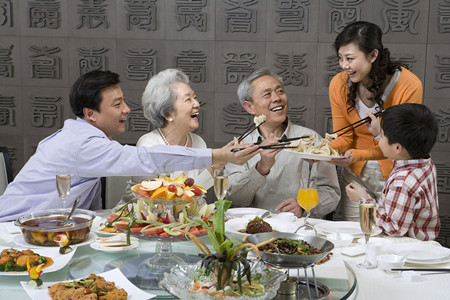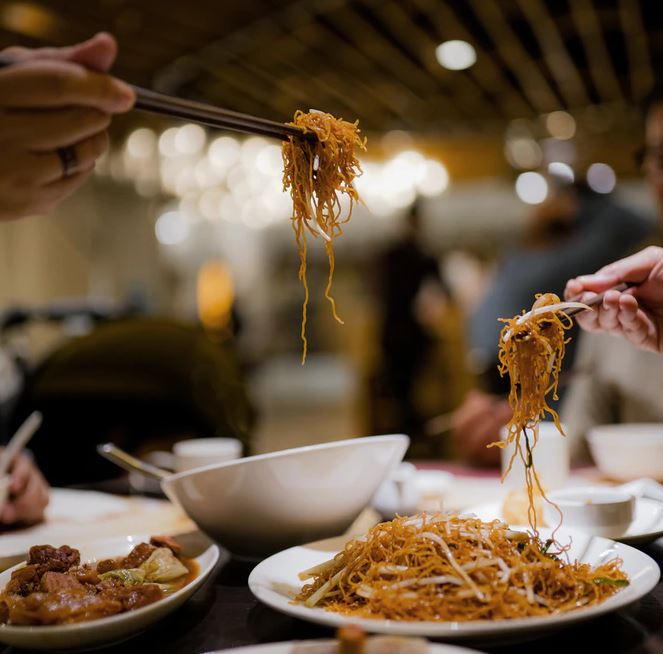20 Free Tips To Explore Diverse Chinese Dishes
Wiki Article
Top 10 Tips For Exploring Regional Cuisines In China
1. Learn about the eight Culinary CulturesTip. Learn about the eight major Chinese culinary cultures: Sichuan Cantonese Hunan Anhui Fujian Fujian Fujian Each region offers distinct flavors, dishes, and cooking methods.Pro Tip: Plan your dining experiences according to your personal preferences.Con: It's a challenge to keep track of the particulars of each dish.
2. Take advantage of local dishesTips: Try the signature dishes from the area you're visiting, like Peking Duck in Beijing, Xiaolongbao in Shanghai or Hot Pot in Chengdu.Pros This experience will be authentic and rich in cultural aspects.Cons: It may restrict your choices for exploring other cuisines when you are only in one area.
3. Beware of Regional FlavorsTip. Sichuan cuisine has a hot, numbing flavor. Cantonese is light, crisp and delicious. Jiangsu's dishes are delicate and sweet. They are also mild. Select dishes according to spice tolerance and preference.It helps you to not order food items that might not be what you prefer.Con: Some flavor profiles might require some testing.
4. Discover Street FoodTips: Every city has distinctive street food options including Jianbing (savory crepes) in Beijing or Roujiamo (Chinese burgers) in Xi'an. Take a look at the local food options.Pro Street Food is inexpensive and convenient. It also gives glimpses into life in the area.Con: Hygiene issues could be a problem; choose vendors who are well-respected.
5. Learn Basic Dining EtiquetteTips to be aware of Chinese eating habits, such as sharing food with your family in a traditional family way and not sticking chopsticks straight into rice.Pro: Shows respect for local traditions and enhances the dining experience.Con: It could take time to adjust to a new manner of conduct.
6. Ask for recommendations from locals.Locals will often have an idea of the most popular restaurants or eateries in particular areas. Do not be afraid to ask assistance.The most appealing part is that you can discover hidden treasures that are not just tourist traps.Cons: Language barriers may create communication difficulties.
7. Be open-minded to unfamiliar ingredientsTaste regional cuisines made with unique ingredients like bamboo shoots, stinky tofu, or lotus root. New foods should be approached with an open mind.Pros: Expands your understanding of Chinese food culture.Cons: Certain foods may not suit your taste or dietary preferences.
8. Be in a position to be able to accommodate any the dietary restrictions of your clients.Tip: Learn phrases in Mandarin to communicate preferences or allergies, such as "Wo bu chi" or "rou" (I don't eat meat).Pro: Offers you a secure dining experiences, tailored to your individual needs.Con: Certain cuisines provide a limited selection of options for people who have dietary restrictions.
9. Pair food and regional drinksTip: Try local beverages like Shaoxing wine in Zhejiang, tea in Fujian, or baijiu in the northern part of China.Pro: Complements the cuisine and adds depth to the experience.Con Contra: Strong flavors like baijiu may not appeal to everyone.
10. Avoid OverorderingTips: Chinese meals are usually served family-style. Take your time ordering, and then add more according to your needs.Cons: Food waste can be reduced and a variety of dishes may be sampled.Cons: The variety of products on the market can make it tempting to order too many.
The benefits of exploring regional Cuisines In ChinaDiscover a myriad of flavors, techniques and ingredients.Cultural Insights: Increase your understanding of the regional identities and customs.Cost-Effective - A lot of local meals are affordable.Memorable Experiences - Trying the iconic dishes of their country of origin will leave you with unforgettable memories.Pros and Cons of Exploring regional cuisines in ChinaHygiene Issues. Certain street foods or small restaurants might not conform to international standards of cleanliness.Language Barriers. The menus as well as the explanations for products might only be accessible in Mandarin.Certain people find certain flavors or textures difficult to digest.Some regions have strict dietary restrictions on vegans, vegetarians and those with allergies to food.Following these tips and pursuing your curiosity will enable you to taste the vast range of regional Chinese food, while facing any obstacles. Take a look at the recommended taste the best dishes across China for more examples including Chinese food culture guide, uncover China food traditions, a guide to eating like a local in China, regional Chinese cuisine highlights, journey through China food culture, culinary tours of China best cities, the flavors of Chinese cuisine, a guide to China food scene, uncover China food traditions, savor China regional food specialties and more.

Top 10 Tips For Visiting Chinese Temples And Avoid Fees
1. Check Entrance Fees in AdvanceTip: Many temples have a fee for entry, which can range from Y=20 to 200 or more. Budget your expenses by analyzing the ticket prices prior to your visit.Pro: It helps you avoid surprises by assisting you to calculate the exact amount of cash for digital payments or cash.Con: Unexpected expenses, such as special costs for exhibitions, could arise.
2. Bring cash or a digital paymentTips: Some temples only accept cash or well-known Chinese payment methods like WeChat Pay or Alipay.Pro: Ensures smooth entry without delays in payments.Cons: Limited options available for foreigners who don't know how to make use of the digital payment app.
3. Photographic signs are a great Place to Look.Find signs to indicate the photography permitted. A lot of temples have signs that restrict photography in sacred areas or in the vicinity of artifacts.Pro: Prevents unintentional disrespect or rule-breaking.Con: There may be different rules in temples in different areas that require special care.
4. Avoid Flash PhotographyIn places where it is permissible to take photographs, be cautious about using flash since it could result in damage to artifacts or disturb worshipers.Pro: Helps preserve temple's art and the surrounding.Con: The lack of light could make for less than ideal photographs.
5. Respect worshippers' privacyTips: Do not take pictures of people praying or engaging in religious rituals unless you have their consent.Pro Displays an understanding of culture and respect for personal space.Con You're ability to capture the ambience of a temple may be limited.
6. Follow Drone RestrictionsTip: Drone use is generally not permitted close to temples. Be sure to check the local laws if you plan to fly an aerial shot.Pros: It's safe from fines and the confiscation of your drone.Cons: The limited range of angles for photography can make it difficult to create distinctive shots.
7. Be Prepared for Fees Additional to the RatesTips: Some temples charge additional fees for photography permits, particularly for equipment that is professional, such as DSLRs or tripods.Pro: Make sure you create high-quality pictures legally.Con: Increases general travel costs.
8. Dress in a modest mannerIt is essential to dress appropriately in temples. Unrespect to the temple's decor can result in being refused entry or even having certain areas closed.Pros: You'll be able to blend in and show respect to the sacred setting.Con: Additional preparation is required in the summer heat.
9. Beware of crowds for photosVisit the site in the early the morning or in the late in the afternoon, to stay clear of crowds and capture photos without obstructions.Enhances your photography and experience.Pro: You have to alter your routine, which may not be the most convenient option.
10. If you are unsure, Ask PermissionIf you're not sure about the guidelines for photography and photography, contact temple personnel for clarification or check any signs.Pro helps you to avoid inadvertently breaking rules.Con: Language barriers might make communication difficult.
The advantages of adhering to the rules of photography and feesRespect diversity of culture:Artifact Preservation: This helps protect fragile artwork and structures.Positive Experiences: Beware of confrontations with temple staff or worshippers.Legal Compliance: Avoids penalties or fines for breaking photography regulations.Cons of Fees as well as Photographic RulesCosts could increase: Fees for entry permits or photography, and additional charges to park entry, could add up.Restricted Creativity: Limitations may hinder the ability to get the perfect photo.Language Barriers.The process of researching can be time-consuming Preparing in advance requires more time and effort.By adhering to the rules and fees regarding photography will ensure you will have a pleasant legal, respectful, and safe visit to China's stunning temples, while maintaining their cultural and spiritual integrity. See the most popular a deep dive into China food culture for blog tips including discover China culinary delights, food guide to China best cities, discover Chinese street food, discover China culinary delights, taste the best dishes across China, discover China culinary delights, a tour of China regional cuisine, the best food destinations in China, discover China regional dishes, discover hidden food gems in China and more.
